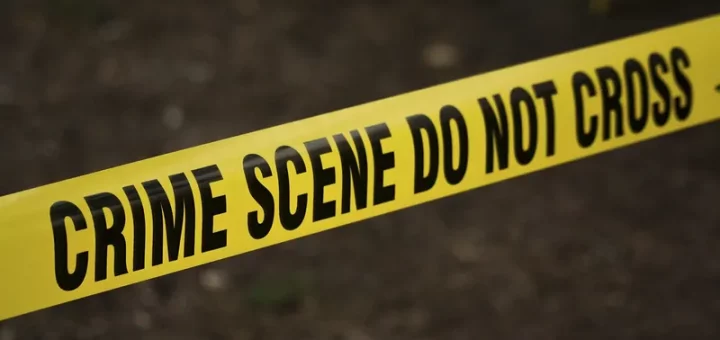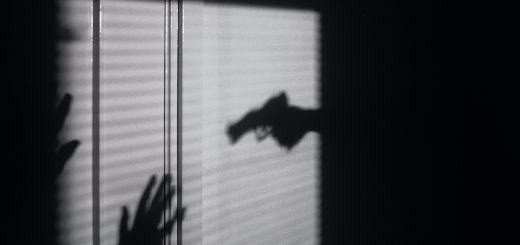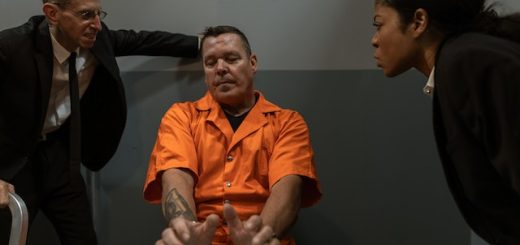A “Fresh Start” Doctrine: R v Beaver Protects Investigations from Charter Breaches

Serious Charter breaches risk undermining society’s confidence in Canada’s justice system. For this reason, courts have developed many comprehensive doctrines to guide police conduct in criminal investigations and to determine when the police have intruded too far into individual rights. In R v Beaver, 2022 SCC 54 [Beaver], the Supreme Court of Canada discussed four of these doctrines: the confessions rule, voluntariness, reasonable and probable grounds to arrest, and the exclusion of evidence obtained in a Charter-infringing manner. In a 5–4 split, the majority may have recognized a new doctrine: the “fresh start” doctrine, in which the police insulate their investigation from one Charter breach sufficiently to protect the evidence they obtain from exclusion.
Facts: One 9-1-1 Call, Two Arrests, and Three Charter Breaches
On October 9, 2016, Mr Brian Lambert called 9-1-1 to report that his roommate and landlord, Mr Sutton Bowers, was lying face down in a pool of blood in their apartment. He claimed that he did not know what had happened, as Mr Bowers had aggressively told himself and their third roommate, Mr James Beaver, to “get out” the night before, and had just returned (Beaver, paras 8–10).
Authorities attended the scene and told Misters Beaver and Lambert that they would treat it as a crime scene. Both Mr Beaver and Mr Lambert, the eventual accused and appellants before the SCC, were detained by the police and taken to the station for questioning. The officer that ordered the detention did so on the basis of the Medical Examiners Act, which does not exist. (At trial, the officer confirmed he meant to rely on a different statute that does exist but does not confer detention powers.) Both accused were informed of their right to counsel but not the reason for their detention. Mr Lambert spoke with a lawyer; Mr Beaver did not (Beaver, paras 10–14).
At the station, a seasoned homicide detective, Detective Vermette, reviewed the file and spoke with the officers who had detained the accused. He discovered that they had been detained on the basis of a non-existent authority, but believed he had reasonable and probable grounds to arrest based on the medical examiners’ call for the homicide team to assess the sudden death. He also knew that Mr Bowers and Mr Lambert had, three days earlier, been involved in a violent confrontation in which the deceased was the aggressor, and that the three roommates had had a number of altercations recently (Beaver, paras 15–23).
Detective Vermette ordered two other officers to arrest Mr Beaver and Mr Lambert for murder. Each accused was informed, this time, of the charge. They were told about the earlier Charter breach (Detective Vermette now knew the earlier detention was unlawful), re-cautioned about their right to silence, and re-informed of their right to counsel. Mr Lambert had a second consultation and Mr Beaver formally waived the right (Beaver, paras 24–27).
Twelve hours into questioning, Mr Lambert confessed that the three roommates had gotten into a fight the night before and Mr Bowers had died in that fight. He also confessed that he and Mr Beaver had moved Mr Bowers’ body to make it look like an accident, agreed what they would tell the police, and began this plan by calling 9-1-1 in the morning. The police showed Mr Beaver the video-taped recording of Mr Lambert’s confession, spurring Mr Beaver to confess (Beaver, paras 28–29).
Lower Courts
The accused applied to have the confessions excluded as involuntary, on the basis of breaches of ss. 8, 9, 10(a) and 10(b) of the Charter. On a voir dire (a hearing to assess admissibility), the trial judge ruled that the confessions were voluntary, the arrests were lawful, and the confessions were admissible. Finding that the evidence was not “obtained in a manner” that breached the Charter because of a lack of connection between the breaches and the evidence, he considered exclusion under s. 24(2) only as an alternative. He admitted the confessions. The accused submitted a joint statement of facts inviting the trial judge to convict them of manslaughter, which he did (Beaver, paras 31–38).
The accused appealed the voir dire ruling. The Court of Appeal for Alberta (ABCA) dismissed the conviction appeal. They found no reviewable error and agreed that the police had severed the discovery of the confessions from the initial Charter breaches (Beaver, paras 39–41). The accused appealed their convictions with leave to the SCC (Beaver, para 5).
Law: Excluding Evidence “Obtained in a Manner” that Breaches the Charter
Exclusion of evidence under s. 24(2) of the Charter is a two-part analysis. First, courts must decide whether the evidence in question was “obtained in a manner” that breached the Charter. This “threshold requirement” asks if there is a sufficient connection between the breach and the discovery of the evidence in question (Beaver, para 96). The connection need not be strictly causal, but can be temporal, causal, or contextual.
If the threshold requirement is met, the courts then apply the test outlined in R v Grant, 2009 SCC 32 to determine whether admitting the evidence would bring the administration of justice into disrepute. The analysis balances three factors (the “Grant factors”):
- the seriousness of the Charter-infringing conduct;
- the impact on the Charter-protected interests; and
- society’s interest in adjudication on the merits (R v Grant, para 71).
The first factor asks the question whether admitting the evidence “would harm the repute of justice by associating the courts with illegal police conduct” (R v Grant, para 93). The second factor “considers the extent to which the breach actually undermined the interests protected by the right infringed” (R v Grant, para 95). The third factor asks whether the evidence should be admitted based on the “public interest in having the case tried fairly on its merits” (R v Grant, para 97).
SCC Majority Dismisses the Appeal and Finds the Confessions Admissible
The appellants raised three issues (Beaver, para 42):
- Was Beaver’s confession voluntary?
- Did the police have reasonable and probable grounds to arrest the appellants for murder?
- Should the appellants’ confessions be excluded under s. 24(2) of the Charter?
Justice Mahmud Jamal, writing for a 5-justice majority, dismissed the appeal and affirmed both Misters Lambert and Beaver’s convictions for manslaughter.
As Mr Lambert did not appeal the voluntariness of his confession, the SCC assessed only Mr Beaver’s voluntariness. Confessions are presumptively inadmissible unless the Crown proves, beyond a reasonable doubt, that they were given voluntarily (Beaver, para 45). The SCC determined that Mr Beaver’s confession was voluntary and that the trial judge had not erred in his determination of voluntariness. Three findings of fact made by the trial judge justified this conclusion: that Mr Beaver understood he did not have to speak to the police, knew that he had been arrested for murder (his legal jeopardy), and confessed only after seeing Mr Lambert’s video-taped confession (Beaver, para 58).
The SCC also held that the police did have reasonable and probable grounds to arrest both appellants at the time that Detective Vermette ordered they be arrested. An officer must subjectively believe that he has reasonable and probable grounds, and that belief must be objectively reasonable. Notwithstanding the earlier unlawful detention, the SCC held that at the time Detective Vermette gave the arrest order, reasonable and probable grounds was both held subjectively and objectively reasonable. Justice Jamal accepted that the police’s knowledge of the appellants’ motive and opportunity to kill Mr Bowers, together with the suspicious nature of Mr Bowers’ death, was sufficient to objectively justify Detective Vermette’s belief (Beaver, paras 82–86).
On the 24(2) analysis, first the SCC identified the breaches under ss. 9, 10(a), and 10(b) of the Charter. Turning to the threshold requirement, the SCC decided that only Mr Beaver’s confession was “obtained in a manner” that breached the Charter, and so conducted the analysis of the Grant factors only for that confession. In deciding this, the majority endorsed the “fresh start” analysis that appears to have divided the Court. (Beaver, para 93).
After making this decision, Justice Jamal balanced the Grant factors in relation to Mr Beaver’s confession and determined that it should have been admitted. The Charter breach was serious, because detaining people without lawful authority is an “inappropriate and unjustified overreach of police powers” (Beaver, para 121). However, the impact on the accused’s interests was minimal, because “the decision to confess was not caused by the Charter breaches” (Beaver, para 125). Finally, excluding the evidence would “undermine the truth-seeking function of the justice system and render the trial unfair from the public’s perspective” (Beaver, para 131). Justice Jamal thus dismissed the appeal and confirmed the convictions.
Justice Jamal sets out the “Fresh Start” Doctrine
On Justice Jamal’s “fresh start” analysis, Mr Lambert’s confession was not sufficiently connected to the Charter breaches to be “obtained in a manner” that breached the Charter. Mr Beaver’s confession was sufficiently connected (though on balancing the Grant factors, his confession was not excluded). Justice Jamal cited authority to support the “fresh start” principle mostly from lower courts and legal scholars (though asserts the idea was “accepted” by the SCC in R v Wittwer, 2008 SCC 33) (Beaver, paras 100–102).
Justice Jamal then surveyed six “potentially illustrative indicators”, pulled from case law that applied the principle. Each factor focuses on what police did during the period of time between the Charter breach and the discovery of the impugned evidence, such as (Beaver, para 103):
- If the police informed the accused of the breach and using “appropriate language” to reverse its effects, such as “we’re going to start over”;
- If the police repeated police cautions, both that the detainee has the right to silence and should not feel influenced by the police;
- If the police allowed the accused to consult counsel;
- If the accused gave consent for the police to take the impugned evidence
- The nature of police interactions with the accused; and
- If the accused was released from detention.
In applying this doctrine, Justice Jamal found that the trial judge had erred not by using the “fresh start” principle but by applying the incorrect legal test. The trial judge did not consider “the connection between the Charter violations and the confessions” (Beaver, para 105). Justice Jamal also clarified that it is incorrect to say that police have “cured” the Charter breaches by making a “fresh start” (Beaver, para 106).
With regard to Mr Lambert, the police had “severed” the Charter breach from the subsequent investigation and successfully given the interrogation a “fresh start” (Beaver, para 109). First, the police said they were going to “start from the very beginning.” They also re-informed him he had been arrested for murder, re-cautioned him, and facilitated a second consultation with counsel (Beaver, para 109).
Mr Beaver, however, had been given no such “fresh start”. He based this conclusion largely on the fact that, instead of re-cautioning Mr Beaver, his arresting officer referred to the caution given to Mr Beaver on his way to the police station (Beaver, para 114):
By telling Beaver that “it’s no different than what uh, Constable Husband read to [him]”, Det. Hossack invoked a caution given when Beaver was unlawfully detained under non-existent legislation and when he had not been advised of the jeopardy he faced for any offence, let alone for murder. By recalling this caution, Det. Hossack failed to dissociate her interaction with Beaver from the earlier Charter breaches and actively maintained a contextual connection between Beaver’s initial unlawful detention and his confession.
Dissent Critiques the “Fresh Start” Analysis
Justice Sheilah Martin, writing for 4 justices, disagreed with the majority on two points. I focus here on her criticism that the “fresh start” analysis interfered with the well-established 24(2) analysis (her other point of departure was the lawfulness of the arrest) (Beaver, paras 139–140). Given her disagreements, on her balancing of the Grant factors, she would have allowed the appeal, excluded the evidence obtained in a Charter-breaching manner, set aside the convictions, and ordered new trials.
Justice Martin interpreted the trial judge and ABCA’s “fresh start” analysis as asking two questions that impermissibly narrowed the “obtained in a manner” analysis (Beaver, para 192):
- Whether there was subsequent Charter-compliant state conduct following the breach but before the discovery of the evidence; and
- Whether that subsequent Charter-compliant conduct severed the relationship between the breach and the discovery of the evidence.
For Justice Martin, this notion of a “fresh start” comes from the “vague” use of a “colloquial description of what police were trying to do” (Beaver at paras 194, 197). The question is whether the breach is connected to the evidence, not whether the police have tried to stop an ongoing violation (Beaver, para 199). The well-established test under 24(2) should not be affected by police’s intention to walk back a Charter breach. The new “fresh start” doctrine carries two dangerous risks: first, that police can correct their conduct and insulate their subsequent actions from Charter review, and second, that the new, narrower approach to s. 24(2) will prevent persons whose rights have been breached from seeking remedies (Beaver, para 201–202).
The “Fresh Start” Analysis Allows the Police to Pretend the Breach Never Happened
I find Justice Martin’s critique more persuasive than the majority’s endorsement of a limiting approach. Lower courts have latched onto the phrase “fresh start” and interpreted it as an endorsement of a discrete approach under the “obtained in a manner” analysis. In doing so, they have incorrectly made a new test out of a pithy piece of obiter.
The 24(2) analysis considers whether to exclude evidence because it was obtained through a Charter breach. In doing so, it attempts to balance the protection of individual liberty with the ability of the state to effectively investigate criminal activity. Courts consistently recognize that the police’s investigative powers must have limits — society would not support a state that wields its power to invade the lives of its citizens without regard for people’s interest in being left alone.
It is worth noting that Justice Jamal shared Justice Martin’s concern about the trial judge’s approach to the “fresh start” analysis. However, his approach does not cure his concern. Justice Jamal focussed on whether the police severed the temporal, causal, or contextual connection between the Charter breach and discovery of the evidence (Beaver, para 108). As Justice Martin pointed out, the question under the threshold requirement should remain whether there is a more than tenuous connection between the breach and obtaining the evidence (Beaver, para 198). This question makes no reference to the police conduct, which is already part of the context that may be used to find a connection.
Where police attempt a “fresh start”, this new doctrine shifts the focus of the s. 24(2) analysis onto police’s Charter-compliant conduct and minimizes the role of the Charter-infringing conduct. The entire point of the s. 24(2) analysis is to determine whether Charter-infringing conduct was severe enough that the evidence must be excluded. To achieve its purpose, the analysis must focus on the infringing conduct. The police cannot unbreach the Charter, and thus claim their conduct is unreviewable for later compliance. With the new approach, the SCC has created a higher risk of the police trampling on citizens rights. Now, they can simply “start over” and pretend that the breach never happened.







Join the conversation